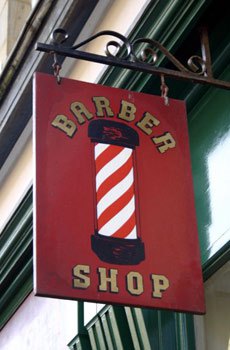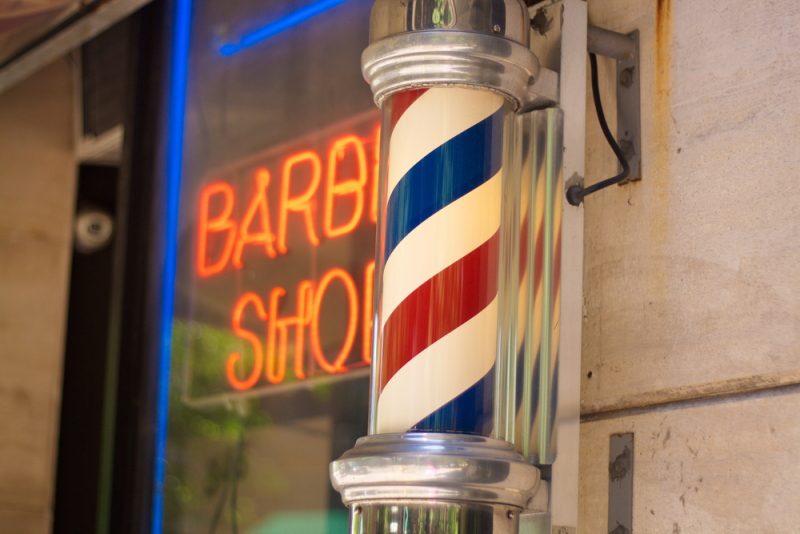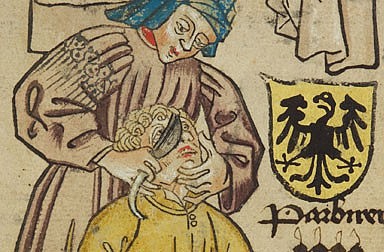There’s nothing quite like a good old-fashioned Barber Shop. How long has it been since you last saw those nostalgic red, white and blue barber poles? – It seems like they are disappearing, right?
Nevertheless, you would never have imagined how much drama and history lays behind the innocent looking striped poles.
The trade sign is, by a tradition dating back to the Middle Ages, a staff or pole with a helix of colored stripes (often red and white in many countries, but usually red, white, and blue in the United States).
If you think that the blue, red and white colors were chosen just because they look cute or that is some particular connection with the French flag (like we did), you would be wrong. The real story behind the white, blue and red stripes is with a rather “bloody’ background.
During medieval times, barbers did a bit more than trimming the beard and telling the story of how they met Frank Sinatra, they also performed surgery on customers and did tooth extractions. Yes, you read it well, medieval barbers were also a surgeons and dentist. So, Sweeney Todd, does not seem so terrifying now, right?
So, the origin of the red and white pole is closely associated with the service of bloodletting and was historically a representation of bloody bandages wrapped around a pole.
The original pole had a brass wash basin at the top (representing the vessel in which leeches were kept) and bottom (representing the basin that received the blood). The pole itself represents the staff that the customer (or should we say the patient) gripped during the procedure to encourage blood flow.
However, for some reasons, or to better say for obvious reasons at the Council of Tours in 1163, the clergy
was banned from the practice of surgery. From then, physicians were clearly separated from the surgeons and barbers. Later, the role of the barbers was defined by the College de Saint-Côme et Saint-Damien, established by Jean Pitard in Paris circa 1210, as academic surgeons of the long robe and barber surgeons of the short robe.

Prior to 1950, there were four manufacturers of barber poles in the United States. In 1950, William Marvy of St. Paul, Minnesota, started manufacturing barber poles. Marvy made his 50,000th barber pole in 1967, and, by 2010, over 82,000 had been producedThe William Marvy Company is now the sole manufacturer of barber poles in North America, and sells only 500 per year (compared to 5,100 in the 1960s).
In recent years, the sale of spinning barber poles has dropped considerably, since few barber shops are opening, and many jurisdictions prohibit moving signs. Koken of St. Louis, Missouri, manufactured barber equipment such as chairs and assorted poles in the 19th century.

As early as 1905, use of the poles was reported to be “diminishing” in the United States.
So, here you go, now you know what the striped barber pole represent and one thing is certain: we sure are lucky that our barbers have access only to your hair and beard, right?


